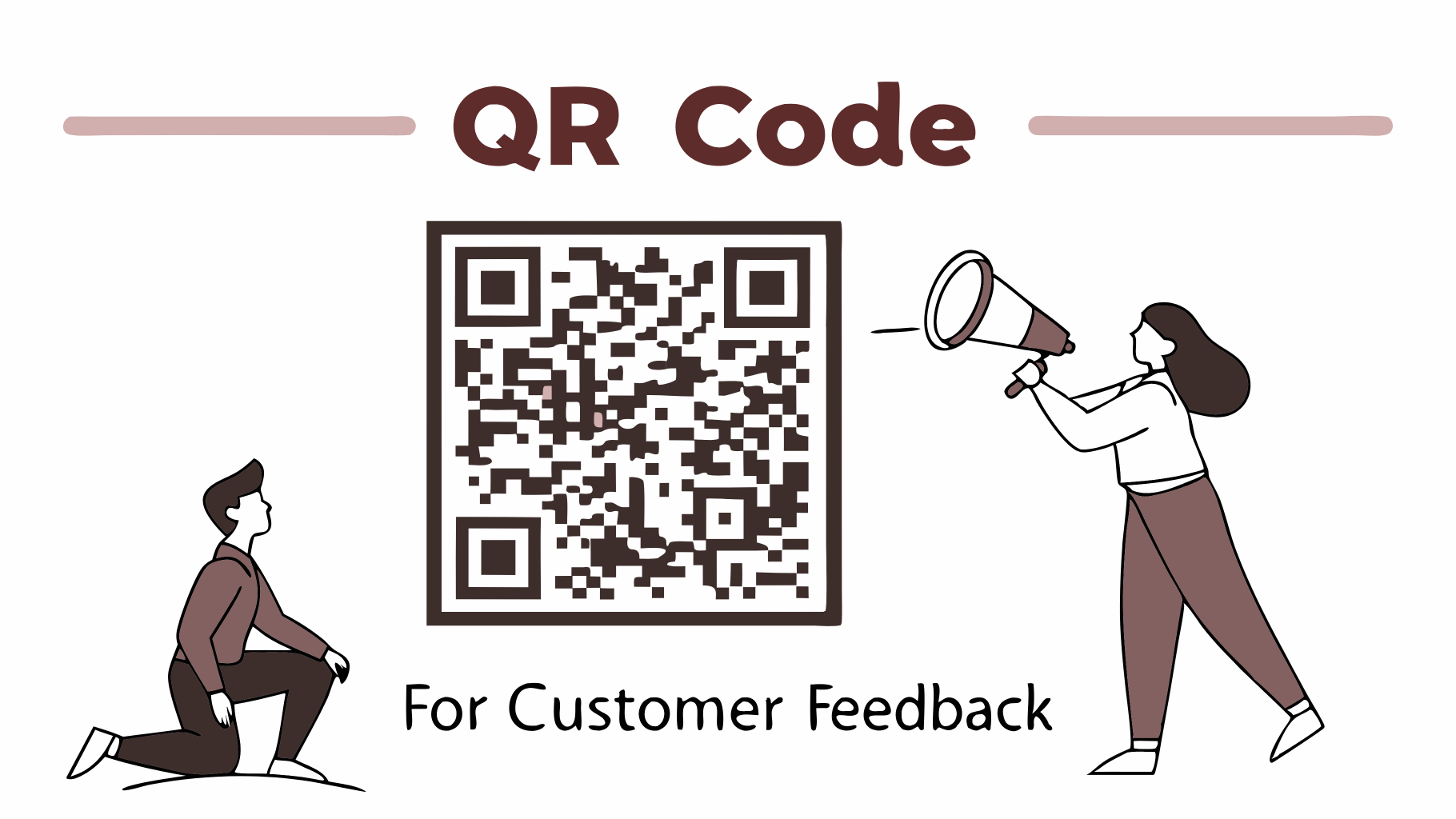How to Create a QR Code Signal: A Complete Guide
Přidal lm45678, dne 3. 03. 2025, 0x

QR codes have revolutionized how we share information in the digital age. These square-shaped barcodes can store various types of data, from simple text and URLs to complex information like Wi-Fi credentials or contact details. Creating a QR code "signal" - essentially generating a functional QR code that transmits specific information when scanned - is surprisingly straightforward with the right tools. This guide will walk you through everything you need to know about creating effective QR codes, including specialized ones for customer feedback collection.
What is a QR Code Signal?
A QR code signal refers to the encoded information within a QR code that becomes accessible when scanned. This "signal" can be virtually any type of data:
- Website URLs
- Plain text
- Contact information (vCards)
- Email addresses
- Phone numbers
- Wi-Fi network credentials
- SMS messages
- Geographic locations
- And much more
The beauty of QR codes lies in their versatility and ease of use - they serve as a bridge between the physical and digital worlds.
Essential Tools for Creating QR Codes
To create a QR code signal, you'll need one of the following:
Online QR Code Generators
Several free and premium online tools allow you to create QR codes without installing software:
- QR Code Generator
- QRStuff
- Beaconstac
- Scan's
- QRTiger
Mobile Apps
Many mobile applications offer QR code generation capabilities:
- QR Code Reader & Generator (iOS/Android)
- QR & Barcode Scanner (Android)
- Kaspersky QR Scanner (iOS/Android)
- QR Code Generator (iOS)
Software Programs
For more advanced needs or bulk generation:
- Adobe InDesign (with plugins)
- Microsoft Word (newer versions)
- Google Workspace (through add-ons)
Step-by-Step Guide to Creating a Basic QR Code
Let's walk through the process of creating a simple QR code using an online generator:
1. Choose Your QR Code Generator
Select a reputable online QR code generator from the options listed above. Most offer similar basic functionality.
2. Select Content Type
Decide what type of information you want your QR code to contain. Common options include:
- URL
- Text
- Contact information
- SMS
- Wi-Fi credentials
3. Enter Your Information
Input the specific data you want encoded in your QR code. For example, if creating a URL QR code, enter the complete web address (including "https://").
4. Customize Your QR Code (Optional)
Many generators allow customization options:
- Colors (be careful with contrast)
- Logo integration
- Shape modifications
- Design patterns
5. Test Your QR Code
Before finalizing, test your QR code with multiple devices to ensure it scans properly and directs to the correct information.
6. Download and Deploy
Download your QR code in your preferred format (PNG, JPG, SVG, etc.) and use it in your marketing materials, products, or signage.
Creating a QR Code for Customer Feedback
A QR code for customer feedback is one of the most effective applications of this technology for businesses. Here's how to create one:
1. Determine Your Feedback Collection Method
Decide how you'll collect feedback:
- Direct to a survey platform (Google Forms, SurveyMonkey, Typeform)
- It's a specialized customer feedback tool
- Through a custom landing page on your website
- By email
2. Create Your Feedback Form
Design your feedback form with clear, concise questions that will provide actionable insights.
3. Generate the QR Code
Using any QR code generator, create a code that links directly to your feedback form.
4. Add Context and Instructions
When displaying your QR code for customer feedback, include:
- A clear call-to-action ("Scan to share your experience")
- Brief instructions
- An explanation of why feedback matters
- The estimated time to complete the survey
5. Strategic Placement
Place your feedback QR codes in locations where customers:
- Have just completed their experience with your product or service
- Are waiting (checkout lines, waiting rooms)
- Exit your establishment
- Receive delivery packages or receipts
Advanced QR Code Techniques
Once you've mastered basic QR codes, consider these advanced approaches:
Dynamic QR Codes
Unlike static QR codes that contain fixed information, dynamic QR codes can:
- Have their destination changed without creating a new code
- Track scanning statistics
- Offer greater flexibility for marketing campaigns
Branded QR Codes
Increase recognition and trust by:
- Incorporating your logo
- Using brand colors
- Adding a frame with a call-to-action
- Customizing the code pattern while maintaining scannability
QR Codes with Analytics
Premium QR code services offer insights like:
- Scan counts
- Location data
- Device information
- Scanning times
- Conversion tracking
Best Practices for Effective QR Codes
To ensure your QR code signals function properly:
- Maintain adequate size - Generally, QR codes should be at least 1x1 inch (2.5x2.5 cm) when printed
- Ensure sufficient contrast - Dark modules on a light background scan best
- Include quiet zones - Leave white space around your QR code
- Test thoroughly - Check functionality across multiple devices and lighting conditions
- Use error correction - Set appropriate error correction levels for your use case
- Keep it simple - Shorter URLs and less complex data make for more reliable scanning
- Consider placement environment - Avoid reflective surfaces or locations with poor lighting
Common QR Code Mistakes to Avoid
Many QR code campaigns fail due to these preventable errors:
- Creating codes too small to scan
- Placing codes in areas with poor internet connectivity
- Linking to non-mobile-friendly destinations
- Using excessive customization that reduces scannability
- Not providing context about what the QR code does
- Linking to low-value content that disappoints users
How much information can a QR code store?
A standard QR code can store approximately 3,000 bytes of data, enough for about 7,000 numeric characters or 4,300 alphanumeric characters. However, the more data stored, the more complex and potentially less scannable the code becomes.
Are QR codes secure?
Basic QR codes aren't inherently secure - they're simply data containers. For sensitive applications, use trusted QR code generators and consider implementing additional security measures like encrypted links or password protection.
Can I track who scans my QR code?
With dynamic QR codes from premium services, you can track metrics like scan count, location, device type, and time. However, you cannot identify individual users unless they provide personal information after scanning.
What's the difference between a QR code and a barcode?
Traditional barcodes store data horizontally and can only contain limited numeric information, while QR codes store data both horizontally and vertically, allowing them to contain much more information and different data types.
How can I make my QR code for customer feedback more effective?
Offer an incentive for completing feedback, such as a discount code, contest entry, or small freebie. Also, keep surveys brief and ensure they work flawlessly on mobile devices.
Conclusion
Creating a QR code signal is an accessible process that can significantly enhance customer engagement and streamline information sharing. Whether you're directing customers to your website, collecting valuable feedback, or sharing contact information, QR codes offer a versatile solution that bridges physical and digital experiences.
For businesses looking to implement a QR code for customer feedback, the process offers an efficient way to gather insights while demonstrating technological savvy. As QR code technology continues to evolve, we can expect even more innovative applications that further integrate our physical and digital worlds.
Remember that the most successful QR code implementations focus not just on the technical creation, but on providing clear value to users when they scan. By following the guidelines in this article, you'll be well-equipped to create effective QR code signals that achieve your specific goals.










Komentáře:
Nenacházejí se zatím žádné relace v databázi.